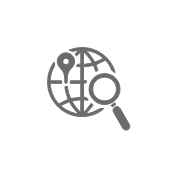Life Sciences Translation Services
Get fast, accurate, and affordable life sciences translation services provided by professional native medical translators and industry experts in over 185 languages.
Professional Life Sciences Translation Services
bayantech provides end-to-end language solutions to assist life science and pharmaceutical companies throughout their journey in global markets. Whether entering new markets or launching new products into existing ones, bayantech is equipped to help you navigate complex regulatory requirements and cultural barriers, ensuring smooth international operations.
Our team of language experts is here to support you at every stage and throughout the product’s entire lifecycle from early development to marketing. With our effective quality control system, adherence to industry standards, and use of advanced technologies, you’ll get high-quality, accurate translations on time.


Reliable Life Science Translation That Supports Your Global Growth
Expanding into international markets is challenging, especially in the highly regulated life science sector. It requires navigating regulatory requirements, obtaining necessary approvals, and overcoming cultural barriers across regions. Moreover, conducting global clinical trials and maintaining effective communication with end-users demands clear and culturally sensitive translations.
At bayantech, we understand that managing all these different aspects can be a daunting task for businesses like yours. Our mission is to simplify your cross-cultural communications and meet your unique business needs through efficient life sciences translation services and solutions.
With a dedicated team of highly skilled project managers and proficient translators who possess deep knowledge of the life science industry, we are committed to ensuring your medical translation is accurate, compliant, and culturally appropriate.
Types of Life Science Documents We Translate
bayantech offers comprehensive life sciences translation services, covering a wide range of documents in the medical, clinical, and pharmaceutical fields. From clinical trials to medical device translation, our team of domain experts specializes in a variety of complex life sciences translations to meet all your needs.
- Clinical Studies
- Case Report Forms
- Clinical Trial Documentation
- Informed Consent Forms
- Regulatory Documents
- Clinical Studies and Reports
- User Manuals and Instructions for Use (IFUs)
- Product Packaging and Labeling
- eHealth Software and eIFU
- International Patents
- Medical Research Documentation
Interested in high-quality Life Sciences translation services?
Work with Native Experts Who Understand Your Market
In the life science industry, translators have to convey various technical jargon and complex medical terms. Translating them correctly and consistently is critical to maintaining safety for patients and medical professionals in addition to getting market approvals. That’s why you should only entrust your translation work to experienced language professionals.
bayantech life sciences translation services provide a reliable team of vetted medical translators and subject matter experts in more than 185 languages. We assign specialized translators with the medical knowledge and linguistic expertise required to translate medical subjects and achieve the level of precision you need.

We also rely on native-speaking domain experts to review and verify the quality of each translation to make sure it’s faithful and culturally relevant. These experienced proofreaders have a deep understanding of your target market and local conventions, allowing them to refine your medical document, and make it user-friendly for your local audience.
What Makes bayantech Different?

Professional Services

+15 Years of Experience

Flexible Turnarounds Timely Delivery

Certified Quality Assurance

24/7
Support

100% Quality Guarantee

Affordable
Rates

Complete
Security

Customer Satisfaction

Technological Advantage



Ensure Translation Accuracy with Our Quality Control Processes
At bayantech, we take several measures to ensure that every aspect of your translation project is handled with professionalism and precision. Our dedicated project managers work closely with you to understand your expectations and specific needs, ensuring they are met at each step.
Here’s how we maintain effective quality control throughout the entire project.
- Team Selection
Our quality assurance process begins by carefully assigning qualified linguists who possess the necessary expertise and experience to match the specific requirements of each project.
- Translation, Editing, Proofreading (TEP)
Our translation teams follow a meticulous three-step TEP (translation, editing, proofreading) process. During this stage, three separate linguists work on the translation to identify and resolve any ambiguities, technical errors, or linguistic mistakes. This collaborative approach ensures a thorough review of the translated document.
- Back Translation
If required, we also perform back translation, where a different translator converts the translated text back into the source language. The original and back-translated versions are then compared to address any inconsistencies or inaccuracies, further improving the quality of the final translation.
- Translation Memory
To maintain consistency across all translated materials, our teams use translation memory tools to ensure that key terminology is used correctly and consistently. This allows us to efficiently improve the overall quality, deliver faster translations, and reduce costs for our clients.
Internationally Compliant Life Science Translations
bayantech life sciences translation services conform to the ISO 9001:2015 and 17100:2015 quality management standards. These internationally recognized certifications are a testament to our unwavering dedication and the effectiveness of our quality assurance procedures.
Our multidisciplinary team actively works to verify that your materials are handled with technical precision, confidentiality, and adherence to industry best practices. You also won’t have to worry about the compliance of your documents knowing that our experts are continuously up-to-date with market changes and local policies.

Whether you need to comply with FDA, EMA, or other regional guidelines, our team possesses the deep knowledge and experience necessary to navigate these complex regulations with ease. By choosing bayantech as your life sciences translation partner, you can have complete peace of mind knowing that your most sensitive and highly regulated documents are in capable hands.
Our Reputable Clients
Over the Course of the years, bayantech has become one of trusted, reliable, and innovative partner of choice. we have forged notable partnerships with some of the largest international companies and organizations as well as distinguished global operators.
Our Services
We professionally translate content for the following Services and more.
Ready to Get Started?
- Lets Keep In Touch
Subscribe to our newsletter and see the latest industry news, stats and trends right in your inbox.












